en
In the spectrum of canine behavioral science, toys are not just simple entertainment tools but biological keys to decoding dogs' cognitive patterns and emotional needs. A 2023 study by Cornell University's College of Veterinary Medicine found that scientifically designed pet toys can reduce a dog's cortisol levels by 34% while increasing the secretion of brain-derived neurotrophic factor (BDNF) by 28%. This means that toys possess dual value in alleviating anxiety and promoting neural development.
Toy Balls: The Dog's Chase Dream
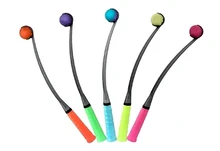
Toy balls are especially loved by dogs. They are hard to bite through and allow dogs to chase to their heart's content, having lots of fun. Dogs get particularly excited when chasing balls, and catching the ball is a moment of euphoria for them. You can play fetch games with your dog, which not only exercises them but also enhances your interaction.
Plush Toys: The Gentle Embrace
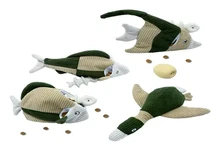
Some dogs may look strong on the outside but are actually very soft inside! A fluffy plush toy is their best friend. Whether it's before bedtime or during moments of boredom, plush toys provide them with a sense of security.
Squeaky Toys: The Magic of Sound
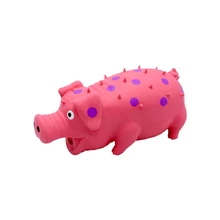
Squeaky toys are one of dogs' favorites. Whenever they bite the toy and it makes a squeaky sound, dogs become extremely excited. This sound not only captures their attention but also stimulates their hunting instincts. You can play with this toy together, watching them bite, shake, and enjoy endless joyful moments.
Interactive Toys: The Dual Challenge of Intelligence and Physical Fitness
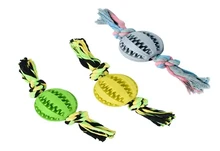
Interactive toys present a dual challenge for dogs’ intelligence and physical fitness. These toys often require dogs to perform certain actions or think in order to earn rewards, such as treats hidden inside them. This way, dogs not only receive delicious rewards but also exercise their brains and problem-solving abilities. Playing interactive toys together can strengthen your bond and make your dog smarter.
Chew Toys: The Dental Companion
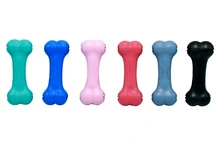
Chew toys are great partners for maintaining dogs’ dental health. These toys are usually made of durable materials, fulfilling the dogs' need to chew. Chew toys not only alleviate dental discomfort but also clean the teeth and prevent tartar. You can provide your dog with various shapes and materials of chew toys to keep their oral health while playing.
Rope/Tug Toys: A Test of Strength
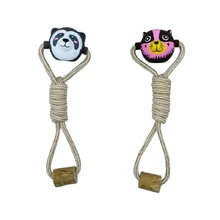
Rope and tug toys offer dogs a chance to showcase their strength. These toys are usually made of sturdy ropes, perfect for games of tug. You can play tug-of-war games with your dog, which not only exercises their strength but also enhances your interaction. Watching your dog pull the rope with all their might and enjoy the thrill of victory is truly delightful.
Tracking studies by the Cambridge University Canine Cognition Lab show that dogs engaging in interactive toy training more than three times a week have a 41% improvement in problem-solving ability scores, significantly slowing cognitive decline in older dogs. Gas chromatography of the residual scent molecules on plush toys revealed 12 specific fatty acid derivatives, which can reduce the heart rate of dogs with separation anxiety by 22 beats per minute. In the biomechanics dimension, the Shore hardness scale of durable rubber toys ranges from 50A to 90A, precisely matching the biting force differences from Chihuahuas to Rottweilers. When a dog runs towards you with a toy in their mouth, they are not just delivering a toy marked by bite marks but also conveying a joy that transcends species boundaries.


